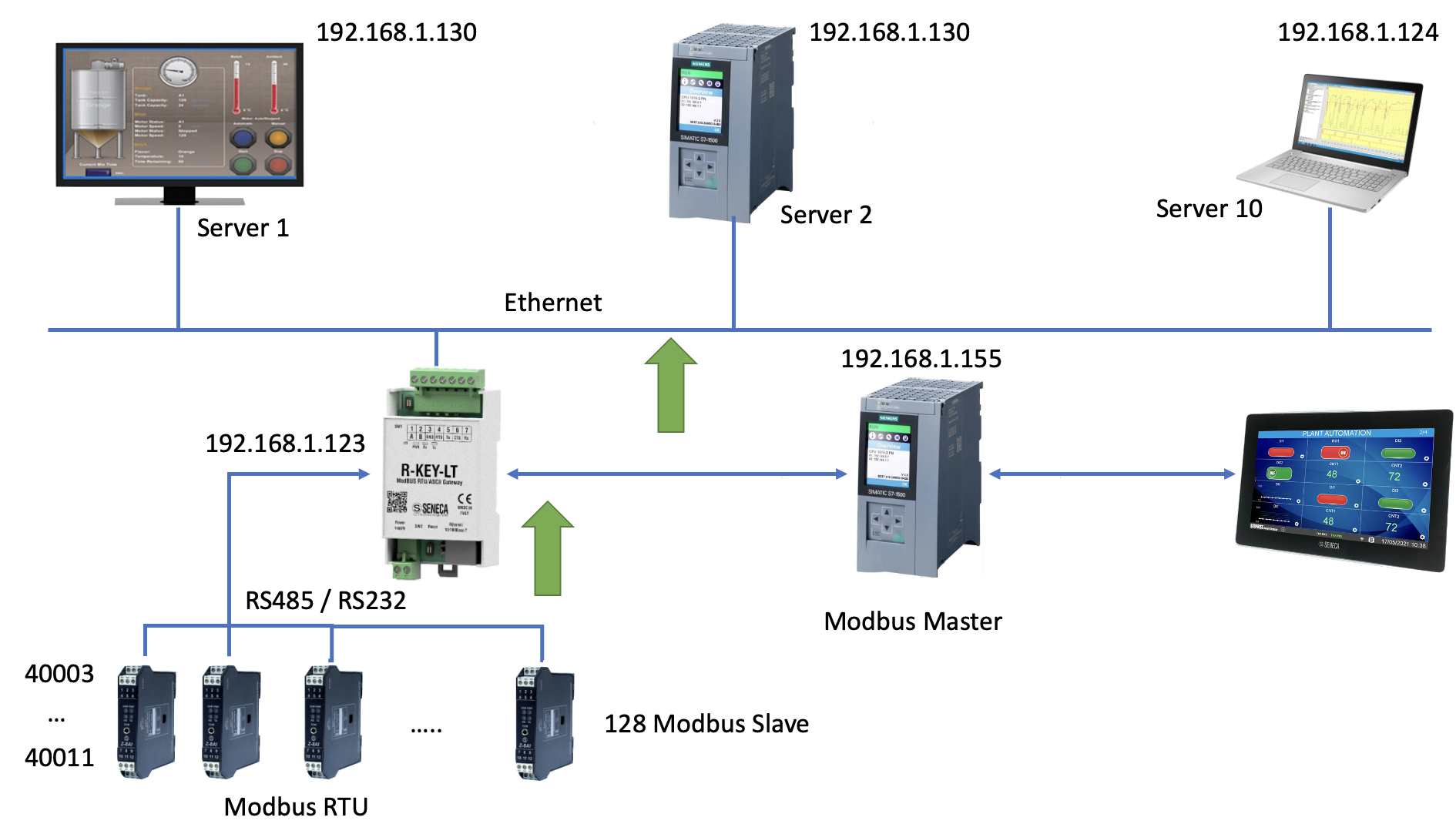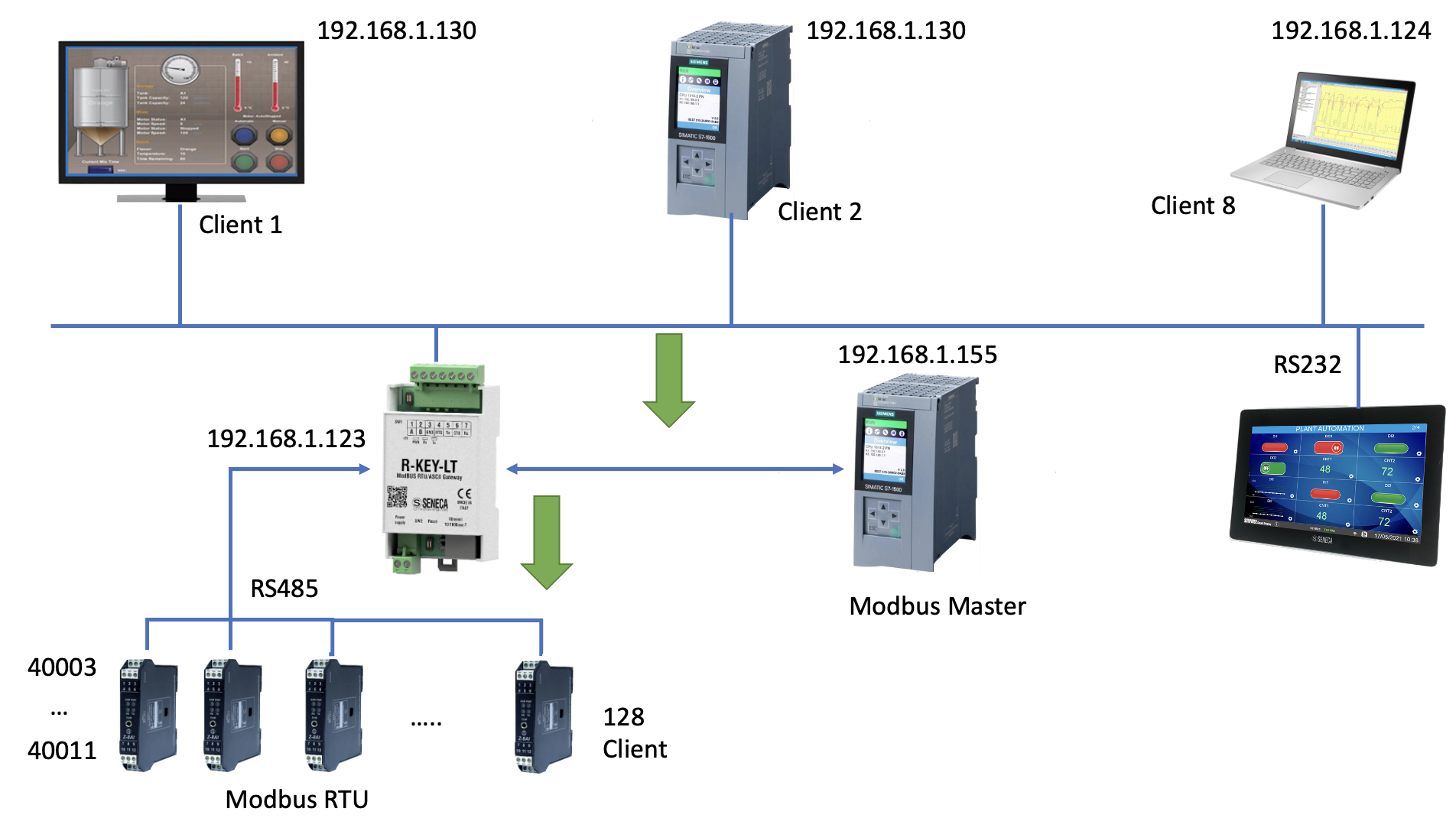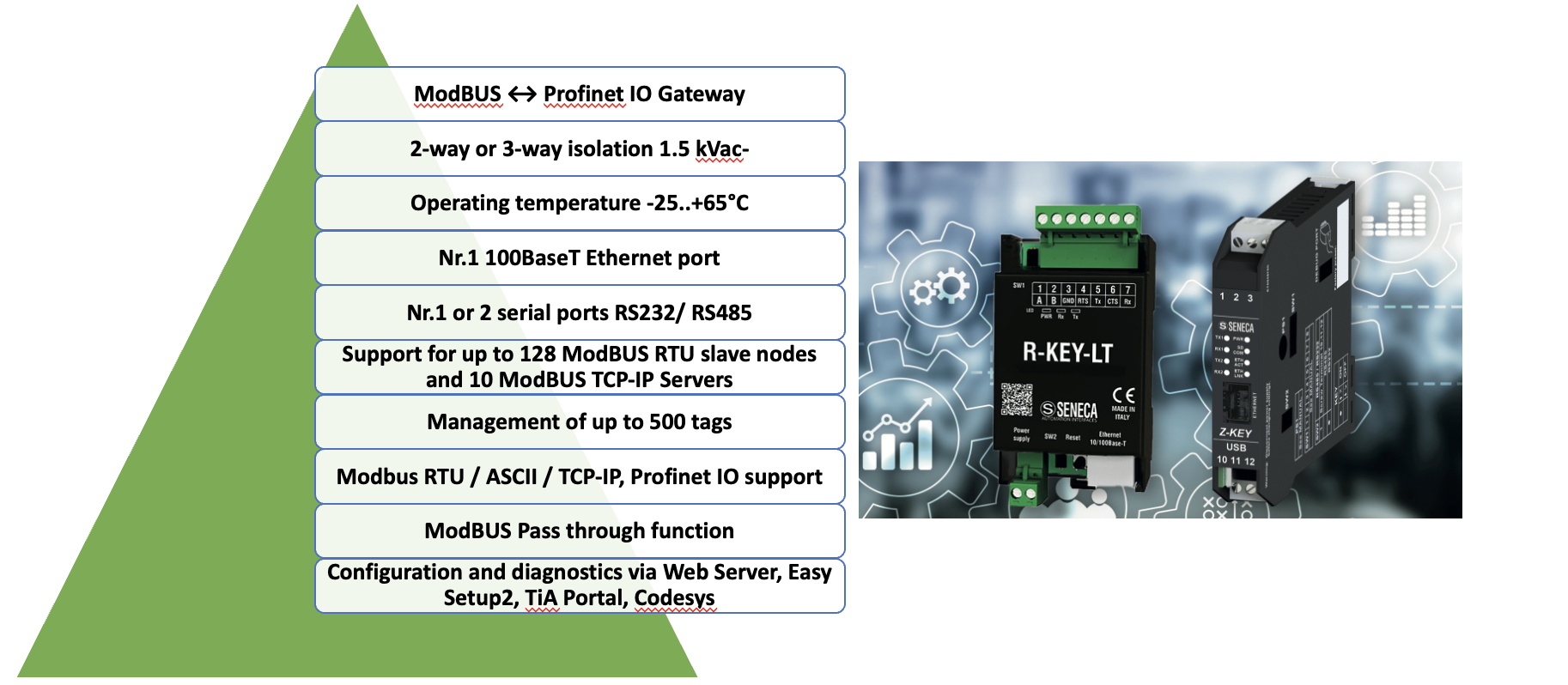I can tell you that it would be a mistake if you do not know about Remote I/O and modbus gateway in the increasingly developing industrial age.
If you are in need of a simple, cost-effective industrial communication solution for PLC, DCS systems in industrial systems, HVAC, Chiller... then Modbus gateway combined with Remote I/O is a solution you need to know in the current trend.
Gone are the days when you had to use a lot of 4-20mA / 0-10V Analog modules in your PLC cabinet. Now you only need to use a few Remote I/O devices combined with Modbus gateway to be able to connect to countless DI, AI, DO, AO at extremely low cost, saving electrical cabinet space as well as unlimited connection distance.
So what is Modbus Gateway? Why do we need to know it in this era of increasingly developing technology? I believe that if you do not know these new communication standards, you will be left behind by your competitors. Let's see the applications that Modbus Gateway brings to you.

What is Modbus gateway?
Modbus gateway is a device used to convert protocols between modbus RTU, modbus ASCII to modbus TCP-IP. To put it more simply, modbus gateway is a device that converts signals from physical modbus to Ethernet communication via RJ45 port.
PLC, DCS, HMI devices with internet connection on the same network system can read and write data through network switches. This means that control cabinets, PLCs, HMIs can communicate with each other through only one internet cable.
Oh, I just told you that modbus gateway can read and write data. That's right. So how does modbus gateway work? First we need to know what modbus RTU is.
What is Modbus RTU?
Modbus RTU is a protocol used in industrial communication similar to the traditional Analog 4-20mA, 0-10V standard. However, for the Modbus RTU standard, we see that it has many outstanding advantages such as being more accurate, not being disturbed, and being able to read more parameters than the analog 4-20mA / 0-10V standard.
Modbus has 3 standards: modbus RTU, modbus ASCII, modbus TCP-IP. Most devices have modbus RTU option in addition to traditional analog 4-20mA, 0-10V standard.
Modbus RTU solves the difficult problem of analog signals being transmitted over long distances and not being disturbed during signal transmission to PLCs or data loggers.
Gateway modbus rtu ethernet ip

Gateway modbus RTU to Ethernet IP is a signal converter from physical Modbus RTU to Modbus TCP-IP into network IP address. Through the internal internet network, PLCs can read all data from different locations without having to pull physical wires as in the traditional way.
One R-KEY-LT device as a Modbus RTU Ethernet IP gateway can read 128 Modbus RTU notes and transmit them to 10 Modbus TCP-IP Servers. That means:
- You can read at least 128 single devices with modbus RTU communication
- If you use Seneca's Z-4AI with 4 Analog inputs 4-20mA / 0-10V then you will have max 4 x 128 = 512 analog input signals
- Or you use Seneca's Z-8AI with 4 Analog inputs 4-20mA / 0-10V then you will have max 8 x 128 = 1024 analog input signals
- Or you use Seneca's Z-4RTD you will have 4 RTD Pt100 channels for one device corresponding to 4 x 128 = 512 temperature input signals.
- Similarly, if you use Seneca's Z-4TC, you will have 4 Thermocoule channels K, J, R, S ... for a device corresponding to 4 x 128 = 512 temperature input signals.
- And you use Seneca's Z-8TC you will have 4 channels 8 channels ocoule K, J, R, S ... for a device corresponding to 8 x 128 = 1024 temperature input signals.
By now you probably understand the power of a device called a modbus gateway. That’s just the ability to read data.
When converting modbus RTU to modbus TCP-IP, 1 R-KEY-LT device can transmit to 10 different servers. That means you can read from many different devices with just one modbus gateway R-KEY-LT.
Gateway modbus tcp ethernet ip

When a Modbus Gateway acts as a signal converter from Modbus TCP-IP to Modbus RTU, it can transmit up to 8 clients to 128 Modbus RTU below. This is a fairly large number for a system, so if you have more, how do you handle it?
It's very simple. You just need to use 1 more R-KEY-LT as modbus gateway for the remaining clients to solve the problem.
Benefits of using Modbus Gateway Ethernet
With applications using R-KEY-LT as a modbus gateway via ethernet port. At this time, you use modbus communication on Ethernet platform to get benefits that Modbus RTU or modbus ASCII can never solve such as:
- Transmit signals over unlimited distances
- Each modbus ethernet gateway will node all modbus RTUs. We can connect multiple Modbus ethernet gateways together to increase the number of modbus slaves below.
- Scanning speed is no longer an issue like with modbus RTU because Ethernet transmission speed is very fast.
- Huge savings on signal wire costs compared to traditional connections
- Reduced cabinet size – space saving & more professional design with Ethernet communication
- Expand connection to multiple modbus RTU communication devices without the need for additional expansion modules such as Analog 4-20mA / 0-10V
In short, if you use a modbus gateway to mediate modbus RTU and modbus TCP-IP it will solve many of the difficult problems that were previously limited.
Common modbus gateways
Seneca R-KEY-LT

Seneca's Seneca R-KEY-LT is designed to be mounted on DIL Rail with 1 RS485 port + 1 RS232 port and 1 RJ45 port. With these 3 traditional physical connection ports, we can communicate back and forth between Modbus RTU, ASCII, TCP-IP quickly and easily.
R-KEY-LT is trusted by many customers due to its stable operation, easy installation and especially its competitive price compared to other brands in the G7 group. I myself often use this R-KEY-LT because of the physical connection between modbus RTU and network port for stable communication.
Stability is what I like most when using R-KEY-LT. In addition, setting up a customized IP address through Seneca's own SDD software is quite simple. We just need to go to Seneca's website and download SDD. Then, use the SDD software to automatically scan for the default IP 192.168.1.168. From here, we can customize the IP address as well as the Gateway address as we like.
Seneca Z-KEY Modbus Gateway

Z-KEY works similarly to R-KEY-LT, however, Z-KEY has a slimmer design similar to another Seneca signal converter module. With this design, Z-KEY can take advantage of Seneca's power bus to supply power and read Modbus RTU signals from Seneca's Z-4AI, Z-8AI, Z-4TC, Z-4RTD, Z-8TC...
For electrical cabinets that are not too large in size, the Z-KEY modbus gateway will be a more preferred device to save installation space. Of course, in terms of aesthetics, I still prefer Z-key over R-KEY-LT & the price will also be a bit higher.
Gateway Profinet R-KEY-LT-P / Z-KEY-P for Siemens PLCs

Profinet Gateway opens a more convenient communication method for Siemens PLCs in general and new generation Siemens PLCs in particular. Seneca profinet gateways all have built-in GSD files provided by Seneca itself.
Installing GSD files directly into TIA PORTAL helps us simplify the use of gateways that are not part of the Siemens ecosystem. Now you can read modbus RTU, Modbus TCP-IP as easily as genuine Siemens modules.
What is Gateway Profinet?
- Modbus RTU, TCP-IP bidirectional communication with Profinet IO gateway
- Supports 128 modbus RTU slaves and 10 modbus TCP-IP
- Allows management of up to 500 tags
- Install directly on web server, easy setup software, TIA PORTAL, Codeys

Using Profinet gateway brings a completely different experience when all Modbus RTU, Modbus TCP-IP signals can be transmitted and read quickly with PLC S7-1200, S7-1500 simultaneously.
That is the difference between Modbus gateway Profinet and Modbus gateway RTU, TCP-IP. If you are using Siemens PLC, R-KEY-LT-P and Z-KEY-P are the options you should consider.
In short, Modbus gateway is a new choice for Modbus RTU, Modbus TCP-IP and Profinet communication protocols. Using Modbus gateway helps us reduce the number of nodes communicating with PLC and increase processing speed compared to conventional physical wire transmission.
I believe that modbus gateways will be widely used in the near future to reduce the cost of electrical cabinet installation and communicate faster and more accurately.